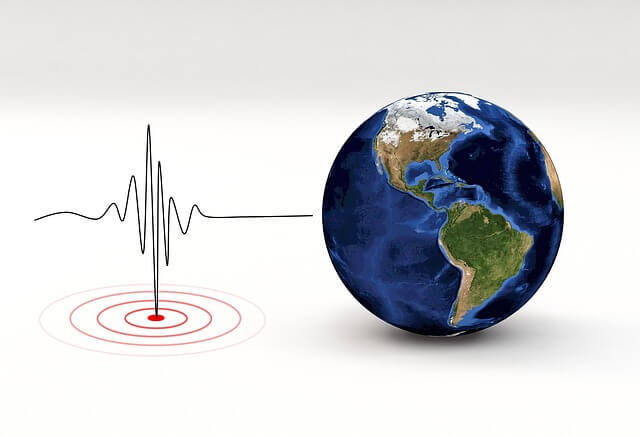A fascinating statistical correlation has been discovered between global seismic activity and changes in the intensity of cosmic radiation on Earth’s surface, potentially providing insights for earthquake prediction. Surprisingly, this correlation exhibits a periodicity that defies clear physical interpretation.
Earthquakes often result in significant human casualties and extensive material damage. The ability to predict the timing and location of such catastrophic events could substantially mitigate their impact. The CREDO project, initiated by the Institute of Nuclear Physics of the Polish Academy of Sciences, aims to investigate the hypothesis that changes in cosmic radiation could be an indicator of imminent earthquakes. Statistical analyses have revealed a correlation between these two phenomena, but the nature of the correlation presents unexpected characteristics.
The CREDO (Cosmic Ray Extremely Distributed Observatory) project is a virtual cosmic ray observatory that collects and analyzes data from various detectors, including smartphone CMOS sensors. By monitoring global changes in the flux of secondary cosmic radiation reaching Earth’s surface, the project seeks to identify patterns related to seismic activity. Secondary cosmic radiation is generated when primary cosmic radiation interacts with molecules in the Earth’s atmosphere, producing cascades of particles.
The concept behind the correlation lies in the understanding that eddy currents in Earth’s liquid core generate the planet’s magnetic field, which deflects charged particles of primary cosmic radiation. Disturbances in the flows of matter driving Earth’s dynamo, caused by large earthquakes, can alter the magnetic field, affecting the tracks of primary cosmic radiation particles. Ground-based detectors should observe corresponding changes in the numbers of secondary cosmic ray particles detected.
CREDO physicists analyzed cosmic ray intensity data from the Neutron Monitor Database project and the Pierre Auger Observatory, comparing it with data on solar activity and seismic activity. The analyses, using different statistical techniques, consistently revealed a clear correlation between changes in the intensity of secondary cosmic radiation and the summed magnitude of earthquakes with a magnitude greater than or equal to 4. Importantly, this correlation only became apparent when the cosmic ray data was shifted 15 days forward relative to the seismic data, suggesting the potential for early earthquake detection.
However, it remains unclear from the analyses whether it is possible to pinpoint the specific locations of these cataclysmic events. Location-specific analyses did not reveal clear correlations between changes in cosmic ray intensity and earthquakes. The correlation appears to be global in nature, suggesting that changes in cosmic ray intensity reflect a phenomenon that affects the planet as a whole.
The observed correlation has surpassed the statistical threshold of five sigma, indicating a chance of less than one in a billion that the correlation is due to chance. However, the unexpected periodicity of the correlation presents additional puzzles. The correlation occurs every 10-11 years, similar to the solar activity cycle, but does not coincide with the maximum activity of the Sun. Furthermore, other periodicities of unknown origin are observed in both cosmic ray and seismic data, including periodic changes in seismic activity and the intensity of secondary cosmic radiation over a cycle corresponding to Earth’s stellar day.
The lack of conventional explanations for these periodicities raises the possibility of alternative, less conventional phenomena. One hypothesis is that the correlation may be influenced by the passage of Earth through a dark matter stream modulated by the Sun and other massive bodies in the solar system. The large magnetic field of Earth, acting as an extremely sensitive particle detector, could respond to phenomena that are currently invisible to existing measuring devices.
Regardless of the source of the observed periodicities, the discovery of a link between cosmic radiation and seismic activity opens up new and exciting research opportunities. Further investigations into this intriguing correlation hold promise for understanding Earth’s dynamics and potentially advancing earthquake prediction.

